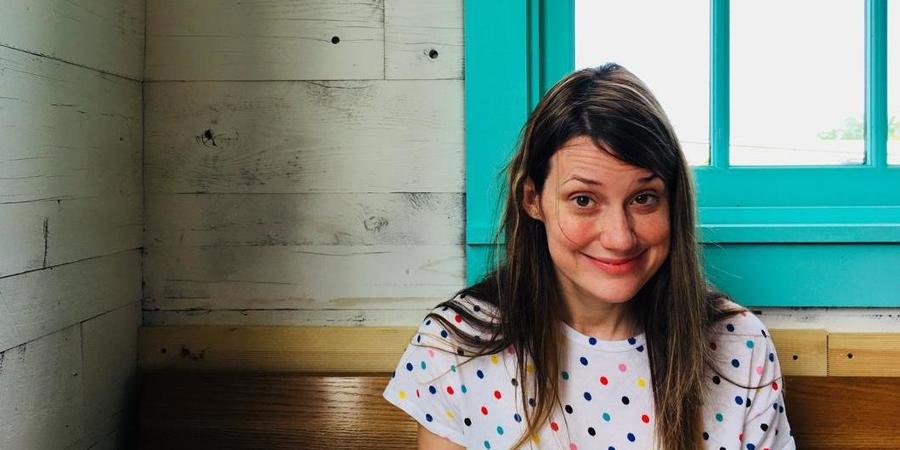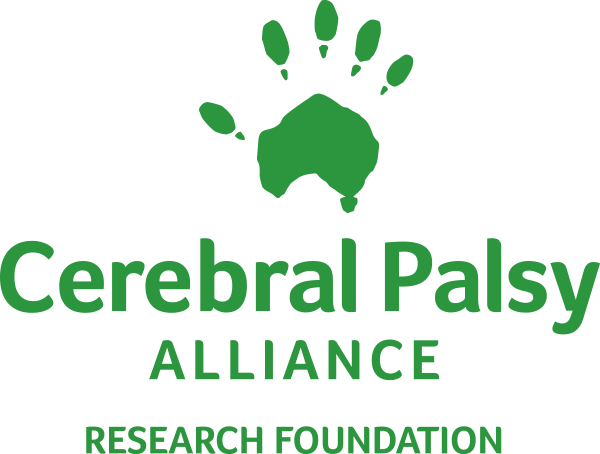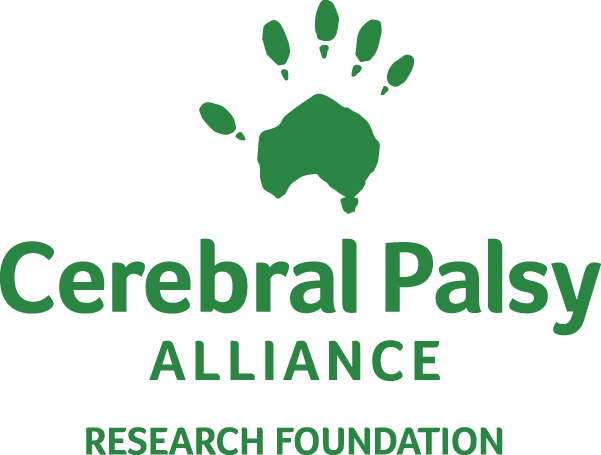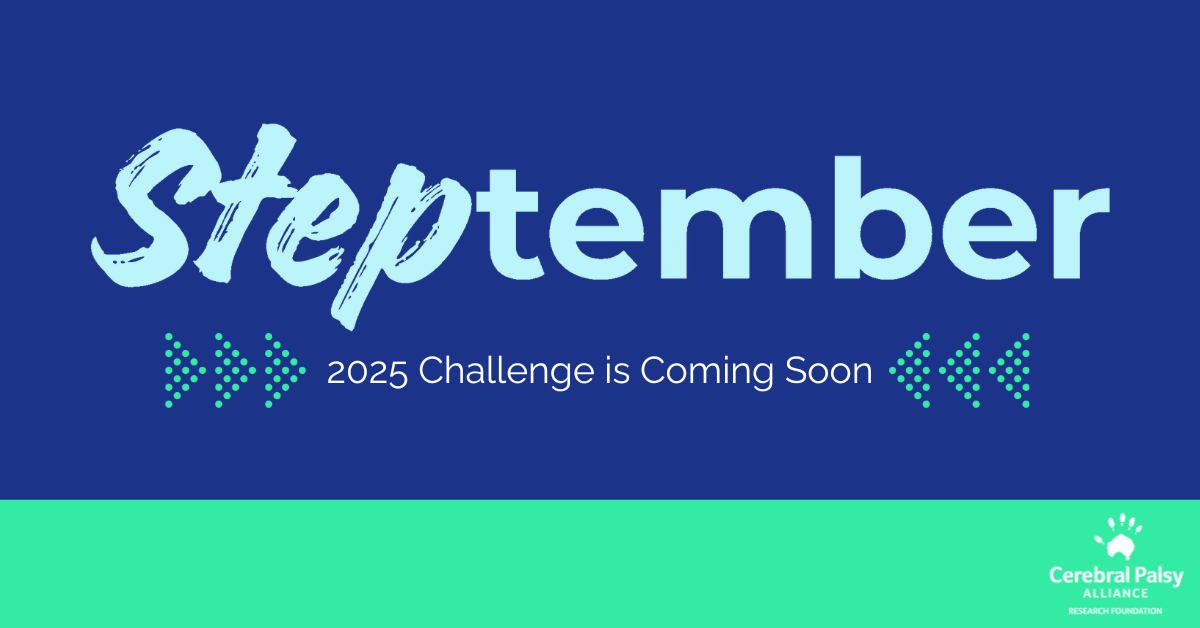
We’re excited to launch KEEPING IT REAL — a series of personal stories that will take you deeper into the lives of people with CP. Each person makes different choices based on what works for them, and we’ll showcase that — highlighting what life is like for them on a daily basis, what they care about, and the ways CP impacts them.
First up, we’ve got SHARON. We’ll be sharing more from her throughout the year, and once you read her story, you’ll see why.
SHARON’S STORY, PART I
By Sharon Klein
For so long, I never thought having cerebral palsy was that big of a deal. It felt like someone else telling me they had blonde hair or brown eyes or some other common physical trait. I lived my life thinking that way — until things got harder, and CP started getting in the way.
And even then, CP definitely shaped me in some ways. I am a social worker. I’ve always wanted to do some sort of counseling because I love talking to people and getting to know their personal stories. It seemed like a very natural thing for me to do, and I’m so grateful to bear witness to and be a part of the healing process for so many clients and their families.
I’ve been married to a wonderful man, Jeremy, for 10 years. He’s always there for me and I am so thankful for him. I also have two little ones, Lizzy and Warren, who are the kindest, sweetest kids I’ve ever met. They keep me on my toes.
I own my own practice and I mostly work with women who struggle with anxiety and depression. My clients feel like God is calling them to do something amazing with their lives, but they feel they’re stuck — whether it’s their life circumstances or a battle with depression or past abuse that’s stopped them in their tracks.
I’m also a school social worker, and that was my dream. I get to wear pajamas to school once in a while and run great programs that focus on building community, celebrating each other’s strengths, and emphasizing kindness. I work with some incredible children and I have a great family of encouraging coworkers.
I joke that everything I do is everything I’ve ever wanted. Being a wife, being a mother, having a boy and a girl (with red hair), being a school social worker and also having my own practice. All of it has been a dream of mine. To have all of it is amazing. But to have it all at once is A LOT.
I have a huge support system — my family, my friends, my coworkers, my church. They’ve never treated me differently because of my CP — and I don’t want them to. That being said, if you see me waiting at the bottom of the stairs because there’s no railing, please don’t hesitate to offer your hand to help me balance on my way up. That’s something I greatly appreciate!
GROWING UP WITH CP
As a kid with CP, the major thing I noticed was, like most of us who were expertly and lovingly cared for by orthopedic surgeon Dr. Leon Root, we went to physical therapy. That was part of our lives, either at our house or at school or both. We had surgeries quite frequently. It felt like I had them every summer. While my sister and my friends were playing in the neighbor’s pool, I would sit poolside in a cast from my toes to the tops of my thighs. I associate July 4th with some kind of surgery because I remember watching the fireworks from my parents’ bedroom window after several different surgeries. Heel cord lengthening, hamstring lengthening, osteotomy, triple arthrodesis, and others. Between that and also getting my tonsils out, my surgery count is somewhere in the high 20s.
I really didn’t enjoy sports or gym class because my mind and my legs didn’t work very well together. So my parents enrolled me in horseback riding when I was little. It’s something I actually continued well into college. It was a sport I could manage. I was never the most elegant or poised person — because my feet wouldn’t cooperate — but I could do it and it was fun.
WHEN THE CHANGES STARTED
Jeremy sweetly gave me horseback riding lessons as a gift for my birthday, and last year, my sister decided to do it with me. We had a ball, but I realized I wasn’t nearly as athletic as I used to be. This and so many other little things made me start to realize that CP — while not progressive — definitely played a part in the deterioration of my movements. As I started to research other adults with CP, I noticed a similar pattern.
I started to feel progressively worse when I was 14. I had this intense sharp pain in my right foot that was so bad that if you touched my foot in a certain place, I’d just start crying. I’ve been told and I believe that I have a very high pain tolerance, but this pain wouldn’t go away, so I started taking Advil.
That turned into taking three or four Advil every four hours on the dot, which kept the edge off so I could keep walking around school. Eventually, Dr. Root said that I couldn’t keep doing this because I was damaging my liver.
He tried injections, too. Those didn’t work, either. He suspected that the way I was walking was causing the pain, but he couldn’t pinpoint it.
Years later, in in the process of preparing for Selective Dorsal Rhizotomy (SDR), I obtained my medical records — a huge stack of paper over six inches high. I was overwhelmed when I realized that during every doctor visit for years and years, Dr. Root stated in his note “patient complains of foot pain.”
No intervention he tried helped — whether it was topical, or something to wear on my foot at night, or the injections. Finally, he decided to do a triple arthrodesis surgery, fusing the bones together to prevent the movement that he thought was causing the pain.
When I had that surgery, it didn’t take. My body wasn’t healing, so he went back in and did it again, scraping the bone to stimulate bone growth. Sadly, that surgery didn’t help the pain — and to this day, the entire incision site gets painfully inflamed. Ironically, something that was supposed to help me ended up causing more problems, as my body tried to compensate for the lack of motion.
The weird part is that up until this started happening, I did not really take notice of how CP was affecting me over the years. But it became a major issue because it was starting to impact my life in a much bigger way. I couldn’t stand for long periods of time, and I started using a wheelchair regularly in high school because Advil was off the table.
I consider myself a very active person given my limitations. So, having to be in a wheelchair was not okay with me. I remember thinking, “If I’m going to be in a wheelchair because I can’t walk, then I can’t eat. Because if I eat, then I can’t burn any calories because I’m just sitting in a wheelchair all day.” That felt logical in my teenage mind. And it just exacerbated everything, plunging me into a long depression. I was trying to find answers.
WHEN CP IMPACTS HOW YOU FEEL — AND HOW YOU RELATE
What I began to notice as I started to speak to other adults with CP is that so many of us have gone through so many surgeries and so many of us have battled that frustration of our body not doing what we wished it would do. So many of us have ended up depressed.
Finding each other has been healing and therapeutic. We talk to each other and it’s helped me realize this is a common part of the process. I remember looking through the pages of Dr. Root’s notes and the times of my worst depression correlated with the surgeries or failed interventions. There was definitely a time when I felt trapped in my own body.
My CP affected me mentally in ways that I never realized until I started to reflect years later. I ended up with a severe eating disorder for a couple of years. I didn’t make the connection then, but I know now that I felt so intensely frustrated by my body breaking down that I was trying to give myself some semblance of control by controlling what I ate. The problem with that is it only further took a toll on my body. After going through this for a while, one particular night I just had enough. I was watching a video during a hospital stay that said, “Eventually you have to realize this is an endless cycle that’s not going to end well. You have to fight with everything in you to get out and trust that a beautiful life is waiting for you to live.” It hit me in that moment, and I thought, ‘I can’t live like this anymore. I can’t do this to myself anymore. God has so much more for me.’
Around that time, some of my friends from school sent me beautiful pictures from Baby Gap ads. They knew that I always said that I wanted to be a mom, but they were showing me that if I continued doing this, I wouldn’t be able to carry a child. The pictures reminded me of this, and it was a huge incentive to get better — and I’m forever grateful to them. I had a reason to get better until just being alive and being me was enough.
I started going to counseling and then once I was recovered, I did what made absolute sense to me: I enrolled in college to become a therapist.
Here I am now.
WHEN THE PAIN DOESN’T GO AWAY
I always tell people that I don’t believe God puts us through things to torture us. There’s always a reason. Whether it’s to learn who we are and for Him to work through us to touch others. He definitely used this experience and so many other experiences to help me and other people in the process.
That being said, the physical pain never left.
Another wonderful doctor made custom orthotics for my feet and significantly reduced my pain for a while. But if I push too hard, don’t wear them for an extended period of time, or if the weather is bad, the pain roars back
And I was in so much pain during the 2017-18 winter. I’d come home from work around 4:30, be with my kids, and be in so much pain. Thankfully, it didn’t bother me at work for the most part. The inserts really helped. But by that time of day — by just 4:30 — I was done. And anytime it rained, snowed, or there was humidity, it would amplify the pain.
I was really frustrated, limping around the house, walking on my heel because any pressure further forward on my foot was too much.
WHEN ANSWERS ARE IN UNEXPECTED PLACES
After several days of intense pain, I sat in the recliner and began to google ADULT CP PAIN IN FOOT. Jeremy was sitting across from me. I came across an article written by Liz Venendaal about her experience as a mom with CP, and it just started this surreal journey. Her piece was called, “Why I'm Having Surgery for My Cerebral Palsy At 32 Years Old,” and until that point, I had no idea what SDR was.
I’d never read about other moms with CP, and Liz’s article took the words right out of my mouth. She shared all the frustrations and pain. We were always told that CP is not progressive or degenerative in the typical sense. But no one really talks about how it impacts us as adults. Or if they did, I didn’t hear them.
I realized that growing up with spastic muscles has strained them, and it’s worn down my bones and joints. Liz’s piece made me think of CP in a way I never had before, and I was amazed that someone described their life experience so eloquently.
A day after I posted the article on Facebook, a series of coincidences connected me directly with Liz and we started talking on the phone and connected instantly. It’s rare to meet someone who you know you’re going be friends with for the rest of your life. But we both knew.
She shared more with me about Selective Dorsal Rhizotomy (SDR) and why it’s so valuable. The surgery severs the connection that carries the signal that causes tightness to be sent to other parts of the body. By severing those nerves, the tightness go away along with the pain.
Liz and I spent a lot of time talking with each other about the surgery — and about life and motherhood. Seeing all these parallels, I eventually decided that it was in my best interest to at least to meet Dr. Park, who performs this surgery on adults and is based in St. Louis. Not everyone is a candidate, but I needed to see if I was.
Knowing that it’s a neurosurgery and knowing the extensive recovery time, I brought my husband and my dad to the consultation, because they’d both be involved in the decision and in helping me during my recovery.
When we met Dr. Park, he was emphatic that I have the surgery. He said, “I enthusiastically encourage you to have this surgery. I think it’ll change your life.” And once my dad heard that, he said, “all right, we’re doing this.”
Ever since, I’ve spent lots of time researching it further and talking about it more. I feel like this is what I’m supposed to be doing. This surgery and the rehab required is the most intense and intensive I will have to date. It’s the first major surgery I’ve had since having children, and that brings a whole other level of consideration to the mix.
That’s where my mom guilt kicks in. I don’t want to be away from my kids. I’ll miss them. I don’t want them to think I’m an absent parent while I’m trying to recover. But I am doing this for them. I want to be as active as possible for as long as possible. I want to be able to play hard with them — watching from the sidelines isn’t enough for me.
Yes, it’ll be hard to be away from them. It’ll be hard not to hold them, pick them up, or play with them while I’m recovering. But I know they’ll eventually thank me for this because I’ll feel so much better. I’ll able to move and be the best mom I can be.*
Keep an eye on the blog for more about Sharon’s experience with SDR and how it changes her life with CP. We’ll be cheering her on and we can’t wait to see what’s next for her.
*The KEEPING IT REAL blog is intended solely to raise awareness about the varied human experience with cerebral palsy and shouldn't be read or construed to contain any medical advice or medical endorsement by Cerebral Palsy Alliance Research Foundation. Only you and your doctor know what's best for you. Please consult your doctor for medical advice.
Wed 21 May 2025
Are you ready for STEPtember 2025? We’re officially in double digits — CPARF is celebrating 10 years of funding groundbreaking cerebral palsy research and driving innovation forward. And there’s no better way to mark this milestone than with our biggest, boldest STEPtember yet. Thanks to you, STEPtember has grown into a global movement that powers […]
Thu 15 May 2025
Celebrate Your Birthday with Purpose: Start a Fundraiser That Changes Lives Birthdays are for joy, reflection, and connection — and now, they can help fund groundbreaking research, fuel innovation in assistive technology, and create lasting change for people with cerebral palsy and other disabilities. Celebrate your special day by starting a customized birthday fundraiser to […]







